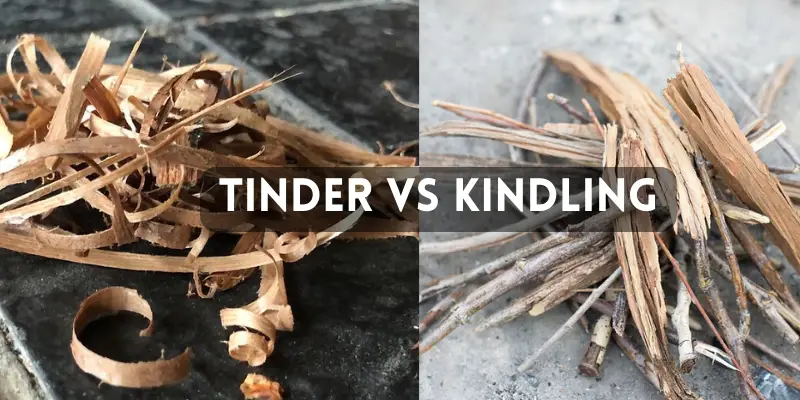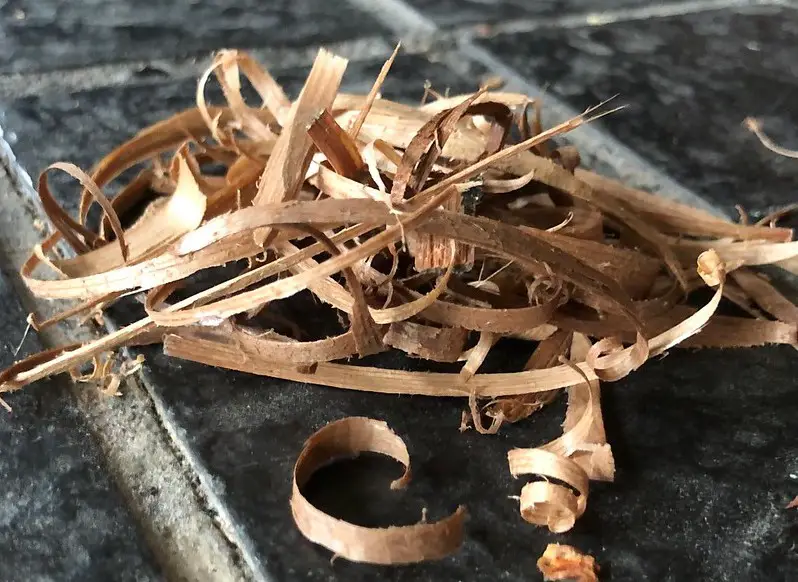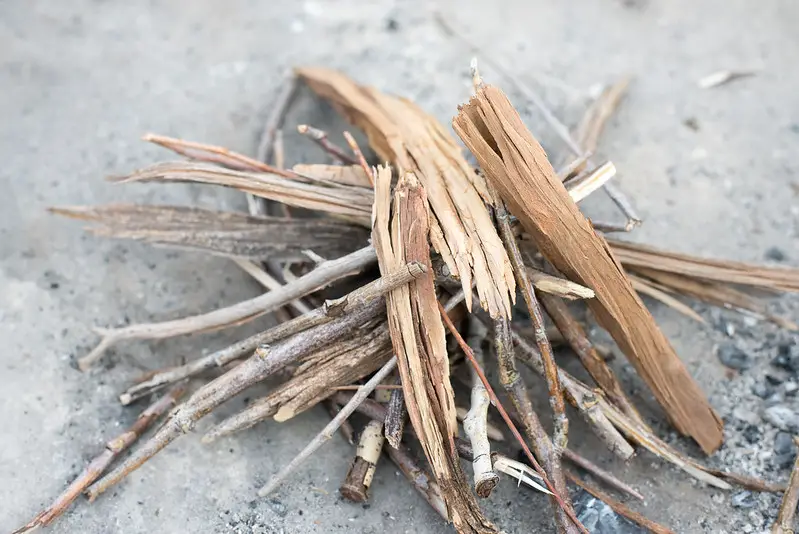Tinder and kindling are two essential components of starting a fire, but they serve very different purposes. Come along with us as we unlock the differences between tinder vs kindling, and how to use them effectively to start a fire in the great outdoors or in emergency situations.

Starting a fire can be a tricky task, especially if you’re in the great outdoors with limited resources. Tinder and kindling are two important components of starting a fire, and understanding the differences between them can help you get your fire going quickly and efficiently.
Tinder is the smallest and most easily combustible material, while kindling is slightly larger and less combustible. Together, tinder and kindling work together to start a fire that will burn long and strong.

What is Tinder?
Tinder is the smallest and most easily combustible material used to start a fire. It’s typically made up of dry, fluffy materials that ignite quickly and easily. Examples of good tinder include dry grass, small twigs, bark, and even lint from your dryer.
In the great outdoors, tinder can be found by searching for dead and dry grass, moss, or small twigs. To make sure the tinder stays dry, it can be stored in a waterproof container or plastic bag.

What is Kindling?
Once the tinder is lit, it’s time to add kindling to the fire. Kindling is slightly larger and less combustible than tinder, and it’s used to keep the fire burning. Examples of good kindling include small sticks, twigs, and branches. These materials should be dry and easy to break, but not too large or thick. Adding kindling to the fire will help to sustain the flame and keep the fire burning.
How to Use Tinder and Kindling Together
The key to starting a fire is to use tinder and kindling together. First, gather a small pile of tinder and place it in the center of your fire pit or designated area. Next, add a small amount of kindling on top of the tinder. Carefully light the tinder using a match, lighter, or fire starter. As the tinder burns, the kindling will catch fire and the fire will start to grow.
It’s important to remember to add kindling gradually, as the fire grows. Adding too much kindling at once can smother the fire, making it difficult to start or keep burning. Once the kindling is burning well, you can add larger pieces of wood to the fire to keep it going.
Using Tinder and Kindling in Emergency Situations
In emergency situations, it’s important to have a reliable way to start a fire. Having a good supply of tinder and kindling can make all the difference. It’s a good idea to carry a small container of tinder with you, such as lint from your dryer or small pieces of wood, in case of emergency.
Kindling can be found in the wild, but it’s a good idea to carry a small hatchet or folding saw to help gather it.
Because starting a fire can be arduous process, many overnight hikers or backpackers opt for canister stoves that have less impact on the environment. Check out our comparison of the popular Soto Amicus vs Windmaster models for more details.
Tinder vs Kindling: Closing Thoughts
Tinder and kindling are two important components of starting a fire, and understanding the differences between them can help you get your fire going quickly and efficiently. Tinder is the smallest and most easily combustible material, while kindling is slightly larger and less combustible.
Together, tinder and kindling work together to start a fire that will burn long and strong. In emergency situations, it’s important to have a reliable way to start a fire and having a good supply of tinder and kindling can make all the difference. Remember to add kindling gradually, as the fire grows and never leave a

